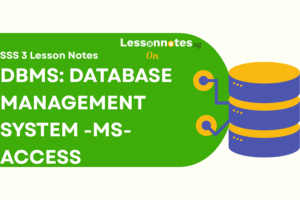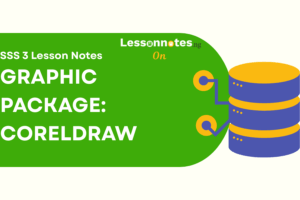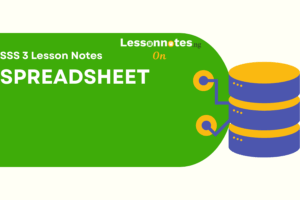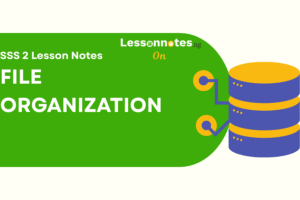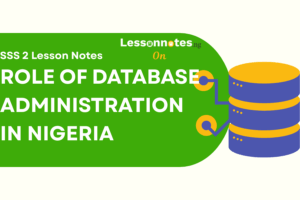Operating System II SS1 Data Processing Lesson Note
Download Lesson NoteTopic: Operating System II
EXAMPLES OF OPERATING SYSTEM
An operating system is a collection of programs that control the application software that users run and provides a link between the hardware and software currently running on the computer. The operating system is also responsible for the management and control of all resources (memory, hard drives, monitor, etc.) that are shared amongst the different application programs that may be running simultaneously.
Examples of common personal computer operating systems:
- Windows 7
- Windows Vista
- Windows Server 2003
- Linux
- Mac OS X
- SunOS
Alternate Spellings: OS, O/S, kernel
Examples: Google announced that they are developing a new operating system that users will be able to use to run on their PCs.
FUNCTIONS OF OPERATING SYSTEM
The basic functions of an operating system are:
- Booting the computer
- Performs basic computer tasks. eg managing the various peripheral devices eg mouse, keyboard
- Provides a user interface, e.g. command line, graphical user interface (GUI)
- Handles system resources such as computer’s memory and sharing of the central processing unit (CPU) time by various applications or peripheral devices.
- Provides file management which refers to the way that the operating system manipulates, stores, retrieves and saves data.
- Booting The Computer: The process of starting or restarting the computer is known as booting. A cold boot is when you turn on a computer that has been turned off completely. A warm boot is the process of using the operating system to restart the computer.
- Performs basic computer tasks: The operating system performs basic computer tasks, such as managing the various peripheral devices such as the mouse, keyboard and printers. For example, most operating systems now are plug and play which means a device such as a printer will automatically be detected and configured without any user intervention.
- Provides a user interface: A user interacts with software through the user interface. The two main types of user interfaces are a command line and a graphical user interface (GUI).
- With a command line interface, the user interacts with the operating system by typing commands to perform specific tasks. An example of a command line interface is DOS (disk operating system).
- With a graphical user interface, the user interacts with the operating system by using a mouse to access windows, icons, and menus. An example of a graphical user interface is Windows Vista or Windows 7.
The operating system is responsible for providing a consistent application program interface (API) which is important as it allows a software developer to write an application on one computer and know that it will run on another computer of the same type even if the amount of memory or amount of storage is different on the two machines.
- Handles system resources
The operating system also handles system resources such as the computer’s memory and the sharing of the central processing unit (CPU) time by various applications or peripheral devices. Programs and input methods are constantly competing for the attention of the CPU and demand memory, storage and input/output bandwidth. The operating system ensures that each application gets the necessary resources it needs to maximise the functionality of the overall system.
- Provides file management
The operating system also handles the organisation and tracking of files and directories (folders) saved or retrieved from a computer disk. The file management system allows the user to perform such tasks as creating files and directories, renaming files, coping and moving files, and deleting files. The operating system keeps track of where files are located on the hard drive through the type of file system. The two main types of file systems are the File Allocation table (FAT) and the New Technology File system (NTFS).
Types Of File System
- File Allocation table (FAT)
- New Technology file system (NTFS)
- File Allocation Table (FAT) uses the file allocation table which records, which clusters are used and unused and where files are located within the clusters.
- NTFS is a file system introduced by Microsoft and it has several advantages over the previous file system, named FAT32 (File Allocation Table).
One major advantage of NTFS is that it includes features to improve reliability. For example, the new technology file system includes fault tolerance, which automatically repairs hard drive errors without displaying error messages. It also keeps detailed transaction logs, which track hard drive errors. This can help prevent hard disk failures and makes it possible to recover files if the hard drive does fail.
NTFS also allows permissions (such as read, write, and execute) to be set for individual directories and files.


